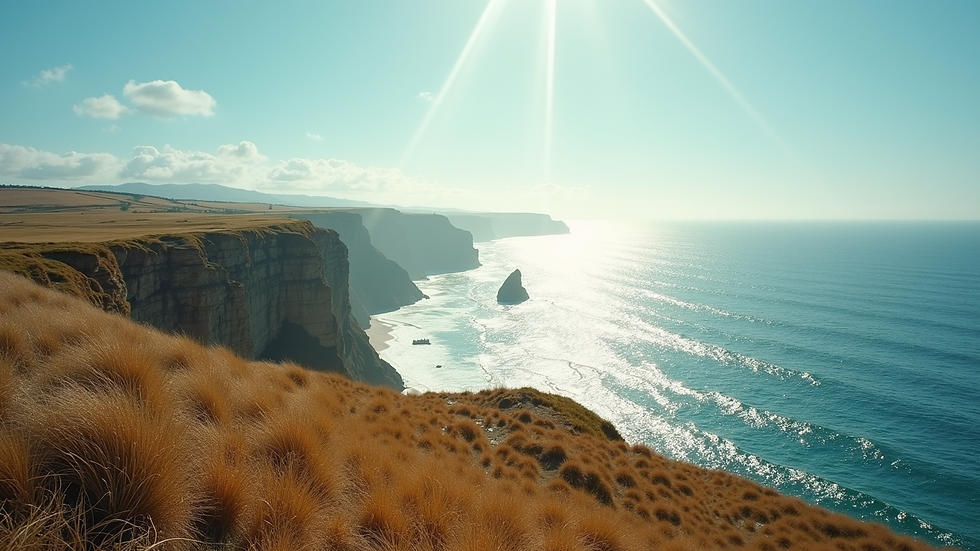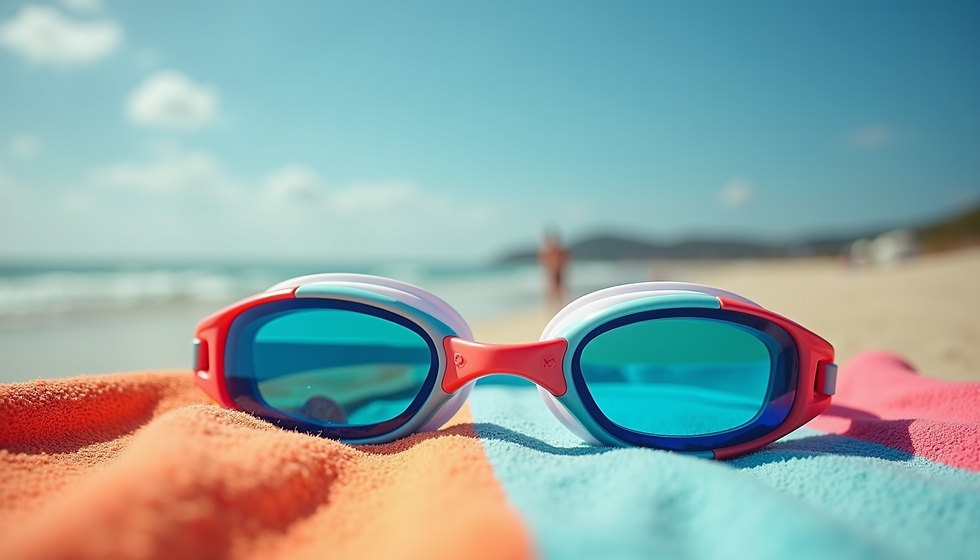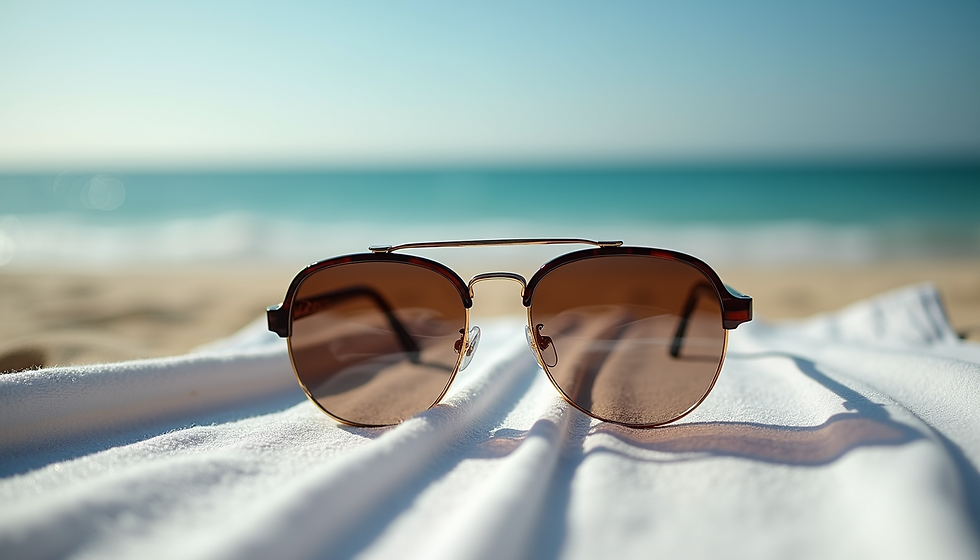Unveiling the Impact of Coastal Glare: How Polarized Lenses Alleviate Eye Strain for Athletes and Spectators
- dainagovender
- Jul 4
- 4 min read
Outdoor events along the coast, whether they involve sports or leisurely activities, can be breathtaking experiences filled with excitement and enjoyment. However, there's a hidden element that can dampen the fun: coastal glare. The sun reflecting off the water and sand can lead to significant eye strain, affecting both athletes competing in events and spectators cheering them on. In this post, we will explore the effects of glare, how it contributes to eye strain, and the essential role polarized lenses play in alleviating these issues.
Understanding Coastal Glare
Coastal glare refers to the intense brightness created by sunlight reflecting off water surfaces, sandy beaches, and other reflective environments. This phenomenon is particularly noticeable during sunny days when the sun is high in the sky.
The brilliance of coastal glare can challenge the eyes' natural ability to adapt, leading to discomfort. Symptoms may include redness, fatigue, blurred vision, and headaches. For athletes, strained vision can impede performance and cause distractions that may jeopardize their safety.
Moreover, spectators also bear the brunt of coastal glare as they watch athletes perform. Long hours spent in intense sunlight can lead to severe eye strain, detracting from the enjoyment of the event. Understanding these effects is crucial for both participants and onlookers alike.
The Impact of Eye Strain
Eye strain, medically known as asthenopia, can have several detrimental effects on individuals, particularly those engaged in demanding activities. For athletes, excessive glare can hinder focus and decision-making, potentially altering their performance. The drive for competition requires optimal vision, and the inability to see clearly can lead to poor outcomes on the field.
Spectators may also find it challenging to enjoy the event fully when dealing with discomfort from eye strain. Frequent squinting, headaches, and fatigue can distract from the experience and lessen the overall enjoyment of watching friends, family, or favorite teams.
Recognizing and addressing eye strain is crucial to ensuring that both athletes and spectators have a positive experience during outdoor events.
The Role of Polarized Lenses
One effective way to combat coastal glare is through the use of polarized lenses. These specialized lenses are designed to reduce the brightness caused by reflected light, improving clarity and comfort for the wearers.
Polarized lenses work by using a special filter that blocks horizontal light waves—the primary culprits of glare. By preventing these rays from entering the eye, polarized lenses allow individuals to see the true colors and details of their surroundings without distortion.
For athletes, wearing polarized lenses can enhance visibility, enabling them to focus on their performance without the interference of distracting glare. Athletes involved in water sports, beach volleyball, and other outdoor activities can benefit significantly from these lenses, allowing them to perform at their best without the burden of eye strain.

Spectators attending coastal events also find that polarized lenses improve their experience immensely. Whether they're watching a surfing competition or a beach marathon, these lenses help maintain comfort by reducing squinting and fatigue. By minimizing glare, spectators are more likely to stay engaged and enjoy the event without the annoyance of discomfort.
Choosing the Right Polarized Lenses
When considering polarized lenses, it's important to select the right pair that suits individual needs. There are several factors to keep in mind, including lens color, frame fit, and UV protection.
Lens Color: Different colors offer various benefits. For instance, gray lenses provide true color perception, while brown or amber lenses enhance contrast and depth perception. Athletes might prefer lenses that amplify their specific sports' colors of interest.
Frame Fit: Opt for frames that fit comfortably and securely. A good fit ensures that the lenses remain in place during dynamic movements, providing consistent protection from glare.
UV Protection: Ensure that polarized lenses provide UV protection. This is crucial for safeguarding the eyes from harmful rays that can lead to long-term damage.
By choosing the right polarized lenses, both athletes and spectators can experience reduced eye strain and increased enjoyment at coastal events.

Conclusion
Coastal glare is a significant factor that can mar the enjoyment of outdoor events for athletes and spectators alike. The impact of eye strain can affect performance and the overall experience, detracting from the excitement and beauty of the coast. Fortunately, polarized lenses offer a practical solution to combat glare and enhance clarity, making it easier for everyone to fully engage in their activities.
As outdoor events continue to attract participants and spectators to coastal locations, the importance of eye protection cannot be overstated. Individuals should invest in high-quality polarized lenses tailored to their needs and preferences for the best possible experience. By taking this simple step, athletes and spectators can minimize eye strain and maximize their enjoyment on sunny days by the sea.

Understanding and addressing the hidden toll of coastal glare empowers everyone to embrace the beauty of outdoor events fully. Remember, a clear view leads to a brighter experience!







Comments